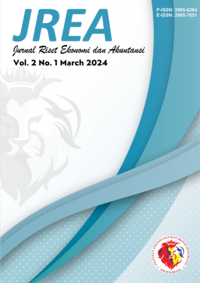Penerapan Bisnis Digital Untuk Pemasaran Bola Ubi Kopong Diperkotaan
DOI:
https://doi.org/10.54066/jrea-itb.v2i1.1242Keywords:
Digital Business, Marketing, Sweet Potato BallsAbstract
The use of digital business is increasingly crucial in facing the era of globalization and technological advancements. This article discusses the implementation of digital business strategies to market a unique product, "Hollow Sweet Potato Balls," in urban areas. The research method employed is a case study, focusing on online marketing, social media, and e-commerce strategies to enhance visibility and product sales in the urban market.By leveraging these digital tools, the hollow sweet potato ball business can expand its market reach and enhance competitiveness in the competitive urban environment. The transformation into a digital business provides a better understanding for SMEs of consumer preferences and behaviors, enabling them to reach more specific customer segments. The use of social media platforms such as Facebook and Instagram also aids SMEs in marketing strategies and consumer interaction.Additionally, delivery services like GrabFood assist SMEs in adapting to the increasing demand for delivery services. In conclusion, SMEs need to adopt digital technology to adapt and thrive amidst the ongoing changes in the business landscape.
Downloads
References
Chaffey, D., & Smith, P. R. (2021). Digital Marketing Excellence: Planning, Optimizing and Integrating Online Marketing. Routledge.
Digital Marketing Institute. (n.d.). The Importance of a Digital Marketing Strategy.
https://digitalmarketinginstitute.com/en-gb/the-insider/the-importance-of-a-digital-marketing- strategy
Kotler, P., & Keller, K. L. (2016). Marketing Management. Pearson.
Ryan, D., & Jones, C. (2009). Understanding Digital Marketing: Marketing Strategies for Engaging the Digital Generation. Kogan Page.
Scott, D. M. (2015). The New Rules of Marketing and PR: How to Use Social Media, Online Video, Mobile Applications, Blogs, News Releases, and Viral Marketing to Reach Buyers Directly. Wiley.
Smith, A. N., Fischer, E., & Yongjian, C. (2012). How does brand-related user-generated content differ across YouTube, Facebook, and Twitter? Journal of Interactive Marketing, 26(2), 102-113.
Statista. (2022). Number of Social Media Users Worldwide from 2017 to 2025. https://www.statista.com/statistics/278414/number-of-worldwide-social-network-users/
Strauss, J., & Frost, R. (2016). E-marketing. Routledge.
Tuten, T. L., & Solomon, M. R. (2017). Social Media Marketing. Sage Publications.
Zikmund, W. G., Babin, B. J., Carr, J. C., & Griffin, M. (2013). Business Research Methods. Cengage Learning.







